I am a firm believer that everyone should make the trip to India at least once. It’s a charming, friendly, and diverse nation that boasts dazzling historical sites, a beautiful culture like no other, and some of the most incredible street food on the planet. When most people think of India, the overpopulated metropolises of Mumbai and Delhi likely come to mind, but there is a lesser-explored area of India that many travelers overlook: the states of Assam and Meghalaya, which are home to 10 places you must visit in northeast India.

I had the pleasure of spending two weeks in Assam and Meghalaya, two of the Seven Sisters (the seven contiguous states that make up northeast India) in March of 2019. After spending 6 weeks in some of the country’s largest cities in 2018, I was blown away by the marked difference between them and this underrated part of the subcontinent. These Indian states, located in the shadow of the Himalayan Mountains, are pristine and largely untouched, and the food is also quite different from that in other parts of the country.

Northeast India is beautiful and mysterious and full of intriguing new discoveries waiting to be made around every turn. These are the 10 places you must visit in northeast India.
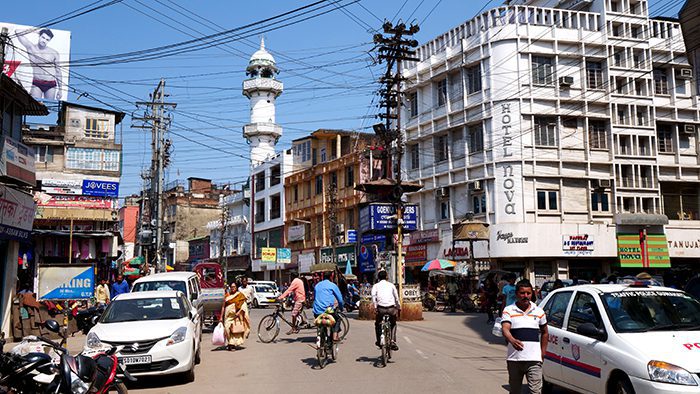
Along the southern bank of the Brahmaputra River in the state of Assam is Guwahati, the largest urban area in northeast India, the largest city in Assam, and one of the fastest-growing cities in India. Because the city is mentioned in numerous epics, legends, and myths, it is believed that Guwahati is one of the ancient cities of Asia. It’s also the best point of entry into Assam and the rest of the Seven Sisters.

Nicknamed “the City of Temples” because of its many Hindu temples, Guwahati is a great place to learn more about the Hindu religion. Its smaller size means it’s also not nearly as busy or crowded as the heavily-touristed megacities like Mumbai, Delhi, Kolkata, and Bengaluru, and there’s quite a bit of greenery to enjoy. The street food is phenomenal; there are tons of flavorful and unique non-veg (meat) dishes that are completely different from their counterparts in other parts of India.
Embark on a culinary journey through Kolkata’s streets with these top picks for Indian street food.
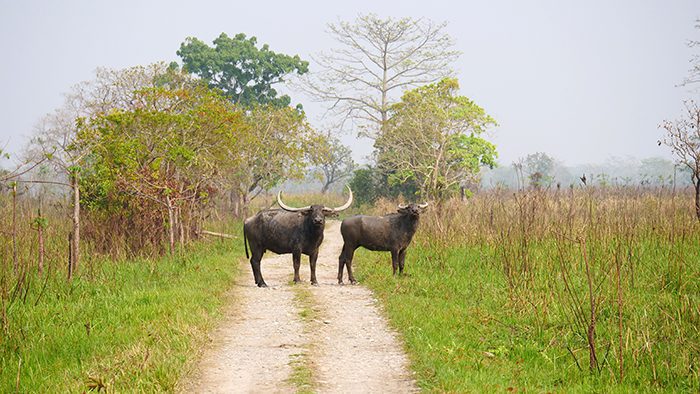
Animal lovers visiting northeast India should set aside some time to venture out to the Himalayan foothills that skirt the Bhutan border in Assam, where they’ll find Manas National Park, a 366.8-square-mile wildlife sanctuary, UNESCO World Heritage Site, Project Tiger Reserve, elephant reserve, and biosphere reserve about a 3-hour drive from Guwahati. The park boasts a long history, during which it was named a sanctuary in 1928, but wasn’t officially established as a national park until 1990.
Check out 10 Indian Street Foods in Jaipur, India

Manas National Park’s diverse habitats make it the perfect home for Asian elephants, birds, reptiles, and endangered species such as wild water buffalo, the Bengal florican, and roughly 80-90 Royal Bengal tigers.

I highly recommend getting there early in the day and staying the night so you get two full days, which will give you ample time to go on 2-4 game drives and hopefully have a tiger sighting! Tiger sightings are rare, but even without one, Manas National Park is easily one of the 10 places you must visit in northeast India!

While visiting the states of Assam and Meghalaya, it would be a mistake to miss out on Shillong, the capital of Meghalaya. This hill station is located in the center of the Shillong Plateau and is surrounded by hills, three of which (Lum Sohpetbneng, Lum Diengiei, and Lum Shillong) are revered in Khasi tradition.

The food in Shillong is very different from other parts of India; the typical diet here is high in both pork and beef. I visited markets for beef and pork during my stay, where the carcasses are butchered in plain view. I noticed while I was in town that the people and culture in Shillong seemed to be more influenced by those in southeast Asian countries than the rest of India. For the best street food in the city, I highly recommend making a trip to the Police Bazaar. You can’t go wrong with anything there!

Any trip to northeast India has to include a trip to the high-altitude town of Cherrapunjee, more commonly known as Sohra among locals. Located 2 hours from Shillong, Cherrapunjee holds the all-time world record for the highest amount of rain in a month (370 inches in July of 1861) and a year (1,041.8 inches, or 86.8 feet, between August of 1860 and July of 1861), earning it the distinction of being the wettest place on Earth, a title it officially held for many years.
Check out 5 Things to Do in Varanasi, India

The main town contains a central market where you can have a nice lunch and buy beef, pork, and fish, but the surrounding area is known for its lush, green canyons and valleys, which helped earn Meghalaya the nickname “the Scotland of the East.” The landscapes on the ride down to Cherrapunjee reminded me a lot of those in Lesotho, the sky kingdom of Africa.

Perhaps the most popular attractions in the Cherrapunjee area are the mind-blowing living root bridges, which are natural bridges made by the local Khasi people, who twist the long, tendril-like roots of local rubber trees, into complex bridges! The hike to get to them takes about an hour, but these gorgeous wonders are worth it. While you’re in the area, pay a visit to the magnificent waterfalls in the area like NohKaLikai Falls, Kynrem Falls, and Daiñthlen Falls. Their beauty alone makes Cherrapunjee one of the places you must visit in northeast India.

Dawki is a town in the West Jaintia Hills district of Meghalaya, located along the border between India and Bangladesh. Located in the Dawki area is the lovely village of Mawlynnong, which is noted for its cleanliness and was named the cleanest village in Asia in 2003. Here, all waste, trash, or debris on the streets is collected by the locals and placed in bamboo bins, and smoking and the use of plastic are prohibited. All residents are mandated to participate in maintaining its cleanliness. In addition to admiring its spotlessness, there is also an old church and a bamboo tree house, from which you can see Bangladesh.

Another nearby village is Shnongpdeng, which lies along the Umngot River. The river’s waters are as clear as glass, which makes boats look as though they’re floating in mid-air! I recommend taking a boat ride down the river; you can see the clear waters up close, watch the local fishermen work, see the suspension and bamboo bridges that span the river, and you can go for a swim. Most of the people in the area are Christian Khasis, so there is a Christian church in the village. There are also great places to have a delicious non-veg lunch.
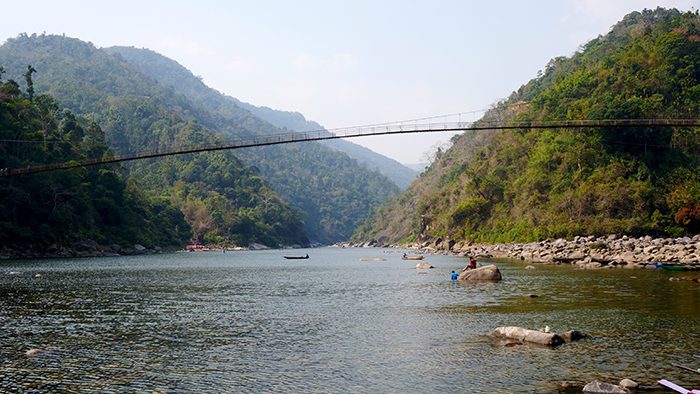
If you find yourself in the Dawki area, don’t miss out on Mawlynnong and Shnongpdeng. They’re both hidden gems that are easily among the top places you must visit in northeast India!

If you’re interested in learning more about the history of northeast India, you have to take some time to explore Tezpur, a small city of roughly 100,000 residents that lies along the northern bank of the Brahmaputra River. It’s roughly a 3-hour drive from Guwahati and 5 hours from Shillong. This historical Assamese city’s name translates to “city of blood,” which comes from a legend about an epic battle between Lord Shiva and Krishna’s army, which led to so much bloodshed that everything was stained red.
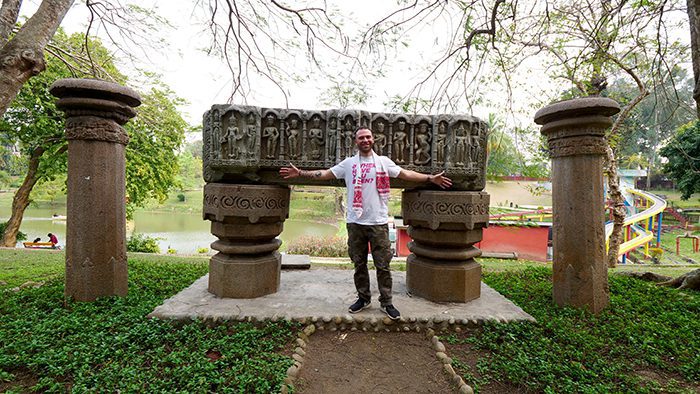
Tezpur is known as the capital of Assamese culture, which includes performances of local indigenous dances like the Bihu dance and the Bagurumba. Devotion to Shiva is clear in Tezpur, with many Hindu temples dedicated to him in and around the city. I can’t recommend the street food in Tezpur enough; it is simply divine. I couldn’t get enough of it and if you’re a foodie like me, you won’t be able to, either!

Nature lovers visiting northeast India are in for a special treat if they venture out to the Golaghat and Nagaon Districts of Assam, where they’ll find Kaziranga National Park, a 166-square-mile tiger reserve, Important Bird Area, national park, and UNESCO World Heritage Site that is noted for its high amount of species diversity, conservation efforts, and varied environments, including grasslands, marshes, tropical forests, and rivers.
Check out 35 Indian Street Food Dishes in Delhi, India

Kaziranga National Park is a great place to visit if you’re looking to spot a wide variety of animals including macaques, leopards, otters, pangolins, herons, fish eagles, crocodiles, Bengal cobras, rock pythons, brown hill tortoises, box turtles, geckos, and water monitors, and of course, the park’s “Big 5”: Asian elephants, Royal Bengal tigers, the swamp deer, wild water buffalo, and the star of the park, the one-horned rhinoceros.

I recommend staying one to two nights and going on two to four game drives, each of which is an amazing and worthwhile experience you’ll remember for the rest of your life. The game drives alone make Kaziranga National Park one of the top places you must visit in northeast India!

If you’re traveling through Assam, a stop in Jorhat is inevitable. While it’s a small city with a population of only 154,000, it’s still an important urban center in northeast India. The city, which covers 42 square miles in the Upper Assam region of the state, is known for its high literacy rate, its many institutions for higher learning, and the high number of creative writers, journalists, and historians who were born in the city.
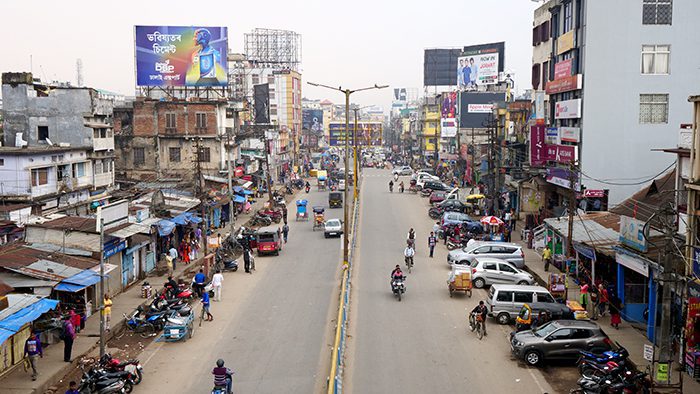
Foodies with a hankering for all things fiery will be in heaven here, as many hot street foods such as spicy pani puri, spicy momos, and spicy chicken wings. I will add a word of caution, though: I’m a connoisseur of spicy food, and I could barely handle it! Those who prefer milder fare will enjoy the local duck and pork. Sightseers should make sure to check out the Hoollongapar Gibbon Wildlife Sanctuary, the Ladai Garh fort, and the Dhekiakhowa Bor Namghar temple.
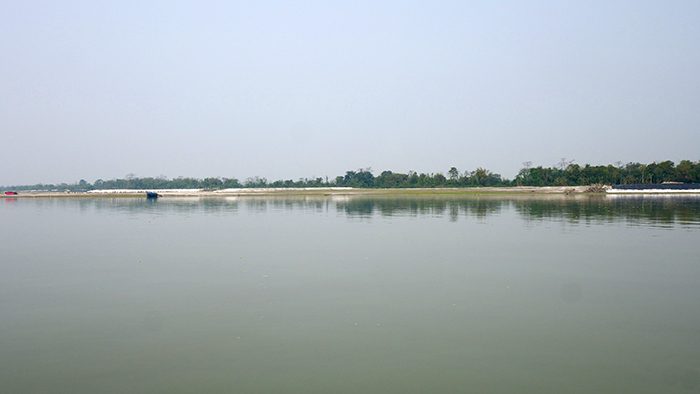
When you pass through Jorhat, take care to not overlook Majuli Island, the world’s largest river island, which is located in the Brahmaputra River and is accessible via ferries located roughly 30 minutes from Jorhat. While the island’s wetlands serve as the homes for elephants, deer, and tigers, Majuli Island is best known for its satras, which serve as schools for various elements of Assamese neo-Vaishnavite culture.

One of the most fascinating cultural experiences of my northeast India trip occurred at the mask-making Natun Shamaguri Satra on the island. The trained craftsmen there have created stunning and intricate masks of varying shapes and sizes that include likenesses of gods, demons, and other mythical beings since the 17th century! If you’d like to grab a bite to eat, I suggest stopping at one of the resorts or small restaurants on the island for some delicious non-veg food, especially the pork!
Check out 5 Things to See and Do in Agra, India

If you’re interested in visiting Majuli Island, I highly recommend arriving at the ferry at least 40 minutes early because there is limited space and only three cars can fit on one. Once onboard the ferry, it takes an hour to get to the island and then two hours to get back because of the river’s current. The trip is worth it, though, as the island is easily one of the top places you must visit in northeast India!

Located in the Dehing Rainforest where the Brahmaputra and Lohit Rivers meet is the Sivsagar, a small city of 51,000 about 90 minutes north of Jorhat that served as the capital of the Ahom Kingdom from 1699 to 1788. While the Ahom Kingdom ruled Assam for six hundred years until they fell to the Burmese in 1819, remnants from its heyday can still be seen in the city today.

Popular sites in and around Sivasagar include Rang Ghar Pavilion, which is one of the oldest-surviving amphitheaters in Asia and hosted sporting events like bull fights for kings and nobles; Sivsagar Sivadol, a stunning Hindu temple complex that is dedicated to Shiva, Vishnu, and Durga; Joysagar Tank, the largest artificial lake in India, which was built in 1697; and the beautiful Gargaon Palace, which served as the royal seat of the Ahom Kingdom.

A one-day stay in town should be sufficient if you’re only looking to sightsee in the city, but I suggest two days if you want to take some day trips to the historical and cultural sites in the surrounding area. After checking out the sites, I suggest heading out and finding some bamboo pork, a delicious delicacy that had my mouth watering!
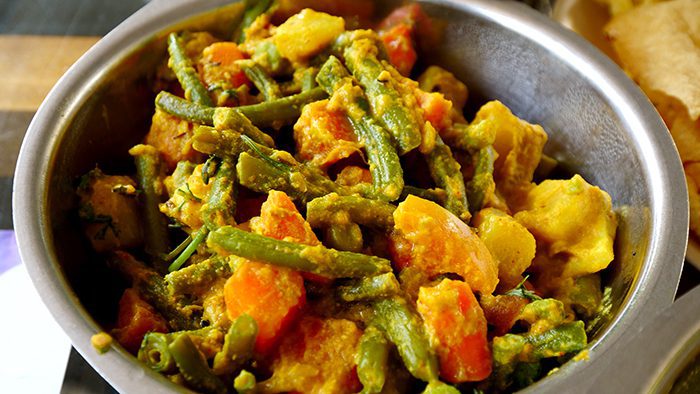
A trip to the states of Assam and Meghalaya is an opportunity to familiarize yourself with an India that very few Westerners know about, an India that is every bit as rich in culture and history as the larger and more popular cities, but has its own cuisine and is almost devoid of tourists. Immerse yourself in the beautiful and mysterious world of northeast India by booking a trip there today!
Check out Things to See and Eat in Lucknow, India

NOTE: I highly recommend buying AXA Travel Insurance every time you set out on a journey that takes you away from home, whether it’s a quick road trip a few hours away or an international adventure halfway around the globe like a trip to northeast India. Preparing for the unexpected with an AXA travel protection plan can be a relief and a lifesaver, as it will reimburse you for 100% of the cost of your trip if you are forced to cancel your trip in the days before you’re set to leave, and you’ll get a 100%-150% reimbursement of your trip’s total cost if you begin your trip but need to return home earlier than expected.

If you require medical attention on your trip, you will be provided with up to $250,000 for any medical expenses, and AXA can set up direct billing with hospitals all over the world. If you’re hospitalized and require better medical care than you’re getting or need emergency evacuation, up to $1 million is set aside to either bring you back to the U.S. or transport you to a hospital with better facilities.

Travelers with pets can rest assured that $25 per day will be provided to delayed travelers who incur pet boarding fees, and trip delay coverage will provide you with up to $300 per day. If your luggage does not arrive at your destination, up to $600 will be provided for additional expenses, and you’ll be provided with up to $3,000 if your luggage or personal effects are lost or stolen at any point during your trip. Trust me, you don’t want to be halfway around the world, with an emergency brewing around you, without an AXA Travel Insurance protection plan in place.

Purchase an AXA Travel Insurance protection plan here to ensure that you’ll be protected on your next adventure!
Counter
101 Countries • 1432 Cities